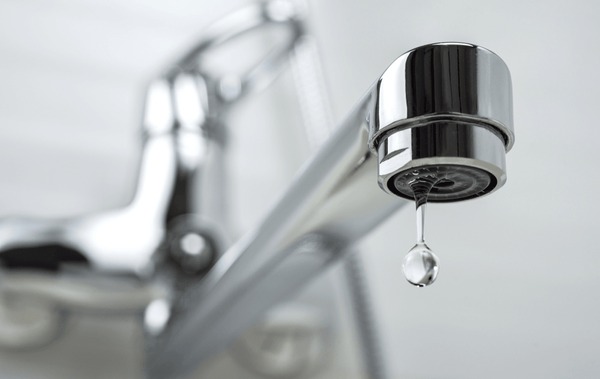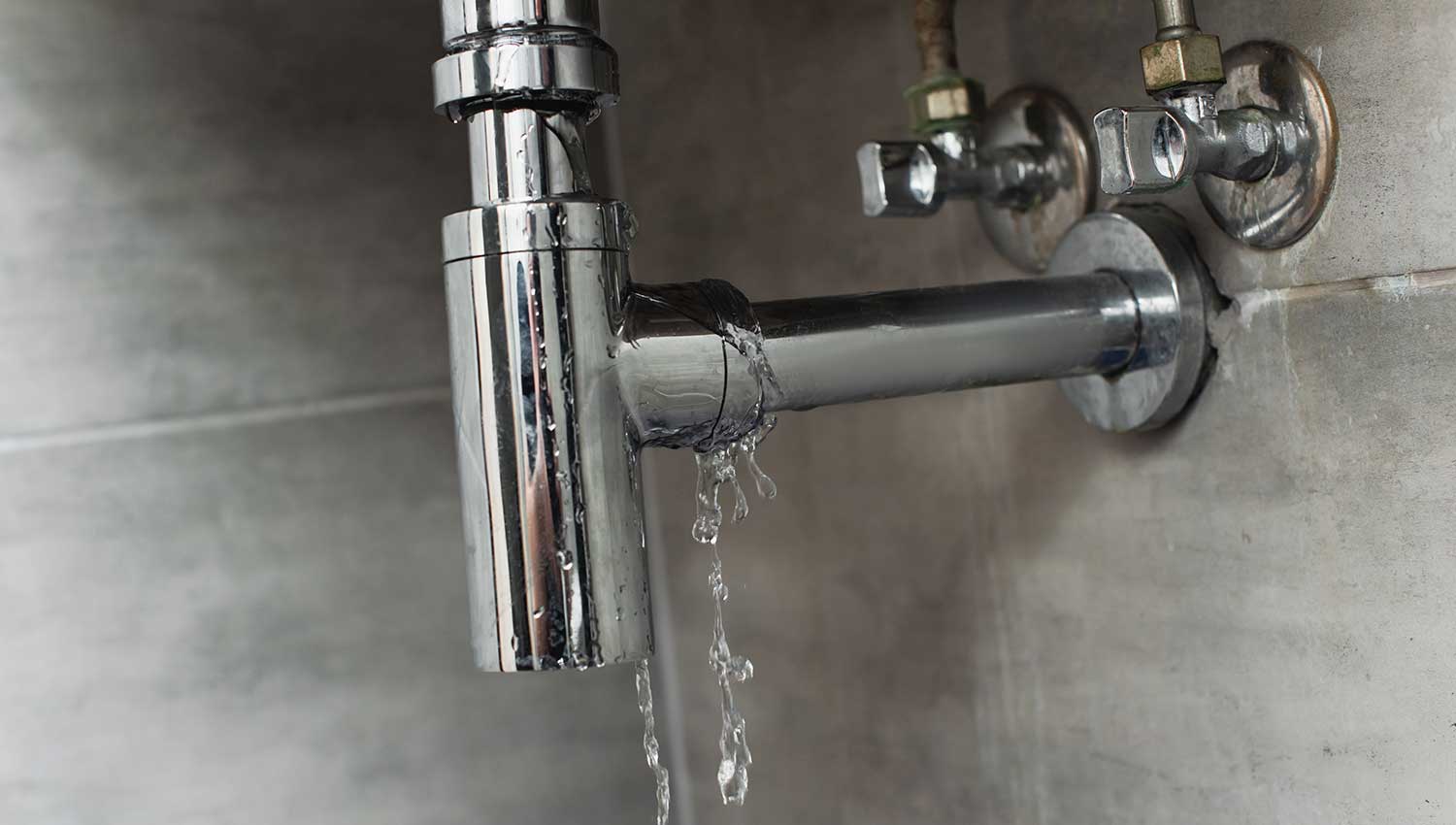Discovering the Impacts of Constant Faulty
Discovering the Impacts of Constant Faulty
Blog Article
Listed here down the page you will discover a good deal of helpful insight involving Here's How to Fix a Leaky Faucet.

Introduction
A leaky faucet may look like a minor inconvenience, yet its consequences prolong far past the periodic drip. Recognizing the effects of a dripping faucet is essential for both house owners and the environment. In this post, we'll explore the numerous effects of this typical household concern and why resolving it quickly is crucial.
Sources Of Leaky Faucets
Leaky taps can arise from a variety of factors, consisting of wear and tear, high water pressure, and corrosion. Over time, the constant use of faucets can bring about damaged seals and gaskets, triggering leakages to develop. In addition, too much water pressure can place strain on plumbing components, leading to leakages. Deterioration and rust can additionally deteriorate tap components, making them susceptible to leak.
Water Wastage
Among one of the most considerable effects of a leaky faucet is water waste. Even a little drip can amount to gallons of drainage in time. This not only increases water costs yet additionally adds to water scarcity and environmental destruction. Addressing leaking taps immediately is important for saving this precious source and minimizing its influence on the planet.
Financial Effect
Along with wasting water, leaking faucets can also have a substantial economic effect. Boosted water costs are a straight effect of water wastage, setting you back property owners hundreds of dollars yearly. In addition, the cost of repairing water damages triggered by leakages can be considerable, specifically if left ignored for a prolonged period.
Ecological Influence
The environmental effect of leaking faucets extends past water waste. By conserving water, home owners can add to more comprehensive efforts to minimize water scarcity and shield all-natural ecological communities. Lasting options such as rainwater harvesting and water-efficient components can better lower the ecological impact of home water usage.
Technological Solutions
Advancements in modern technology have resulted in the development of smart faucets and water-saving gadgets that assist reduce water wastefulness. Smart taps utilize sensors to detect activity and adjust water circulation as necessary, minimizing waste without compromising ease. Water-saving devices such as aerators and low-flow showerheads are also effective in saving water without endangering efficiency.
Worldwide Perspectives
While dripping taps might seem like a local problem, they contribute to more comprehensive worldwide challenges such as water scarcity and environment modification. In areas currently dealing with water stress, every decrease counts, making leak prevention and repair important. By adopting water-saving methods and investing in lasting innovations, home owners can play their part in addressing these pressing global concerns.
Governing Actions
Government regulations play an important role in alleviating the effect of dripping faucets and advertising water preservation. From building codes that need water-efficient components to water-saving motivations and rebates, policymakers have a variety of devices at their disposal. By implementing and imposing these guidelines, federal governments can make sure that property owners prioritize water preservation in their daily lives.
Community Effect
Addressing leaky taps needs cumulative efforts at the community degree. By increasing understanding regarding the value of water conservation and giving resources for leak discovery and repair work, regional authorities can encourage homeowners to do something about it. Initiatives such as water-saving rebate programs and leakage detection campaigns can incentivize actions change and promote liable water use.
Instance Researches
Real-life examples of the influence of dripping taps highlight the importance of proactive maintenance and timely repairs. From water damages to escalating water bills, the consequences of neglecting leaks can be extreme. By sharing these case studies, homeowners can better comprehend the value of addressing dripping taps immediately.
Educational Campaigns
Educational projects play an important role in elevating recognition about the results of leaky taps and promoting water preservation practices. Via workshops, seminars, and online sources, home owners can discover how to identify and repair leakages themselves. By empowering individuals with expertise and devices, instructional campaigns can promote a society of liable water use within areas.
Wellness Problems
Leaky taps can create helpful settings for mold and mold growth, positioning wellness risks to owners. The presence of mold can intensify respiratory system issues and allergies, particularly in vulnerable individuals. In addition, water damage resulting from leakages can jeopardize the architectural honesty of structures and lead to costly fixings.
DIY vs. Professional Repair
When faced with a leaky tap, house owners often question whether to try repairs themselves or work with a professional plumber. While do it yourself fixings can conserve money, they may not always attend to the hidden concern successfully. Specialist plumbers have the knowledge and equipment to diagnose and take care of leakages appropriately, making sure long-lasting solutions and assurance for homeowners.
Preventive Measures
Preventing leaky faucets requires routine upkeep and positive steps. Easy tasks such as changing worn-out washing machines and seals can avoid leaks from developing. In addition, updating to high-grade components and reducing water pressure can aid lengthen the lifespan of taps and reduce the danger of leaks.
Final thought
Finally, the impacts of a dripping faucet prolong much beyond the periodic drip. From water wastefulness and raised water expenses to health worries and environmental influence, the consequences of overlooking leakages can be substantial. By attending to leaking faucets promptly and embracing water-saving techniques, home owners can mitigate these effects and contribute to a much more sustainable future.
Why You Shouldn’t Ignore a Leaky Faucet in Your Home
What Causes a Leaky Faucet?
Various factors can cause a leak, from loose and worn-out parts to corrosion. Your faucet has four essential components from which most plumbing issues will stem: the O-ring, the valve seat, the washer and the gasket.
What Is an O-Ring?
The O-ring is a stem screw that fastens parts of the faucet in place, preventing water from leaking out of the spout. Depending on your faucet type, the stem might have multiple O-rings. Water will drip from the faucet’s handles and base if this part breaks or deteriorates.
What Is a Valve Seat?
The valve seat controls the flow and temperature of the water. Found at the base of the handle, it works as a seal for the faucet’s stem. The valve seat ensures the water is allowed to flow or is blocked as the handles dictate. You’ll know it’s malfunctioning when water leaks from your faucet’s sides.
What Is a Gasket?
The gasket is found between the water inlet and the valve stem. It creates a seal between the faucet and the sink, holding its joints by aerators attached to the stem’s head. Water will trickle out from the base if the gasket isn’t working.
What Is a Washer?
The washer secures the handles and prevents leakage, serving a similar purpose to the O-ring. While the O-ring is ordinarily round and made from an elastic material, such as rubber, the washer is square-shaped and composed of brass, copper and other hard metals. If it malfunctions, corrodes or has been improperly installed, water will leak out of the handles, causing that incessant faucet drip.
Why Is a Leaky Faucet Dangerous?
A leaky faucet left alone for too long can have significant consequences.
Pest Infestations
Since bugs and rodents gravitate towards the scent of water, a leaky faucet will draw pests to your sink. Both are looking for leaks accessible through crawl spaces, which a faucet provides. If you leave water dripping for too long, you run the risk of an infestation.
Rust
If one of the faucet parts has started to corrode, the resulting rust can spread to your pipes and valves with startling speed. The rust might even lead to cracks or other impairments, resulting in more severe plumbing issues.
Your sink could also sustain damage from a leaky faucet. The water in your tap possesses sparse elements of calcium and iron that can stain your sink with repeated and prolonged exposure. Once those elements in the water have been open to the air for some time, your sink will start to rust, creating marks that can be difficult to remove.
https://www.tomsmechanical.com/blog/why-you-shouldnt-ignore-a-leaky-faucet-in-your-home

We hope you enjoyed reading our article about How to Fix a Leaky Faucet. Thanks a ton for taking the time to read through our posting. I beg you set aside a second to distribute this page if you appreciated it. Thanks so much for taking the time to read it.
Report this page